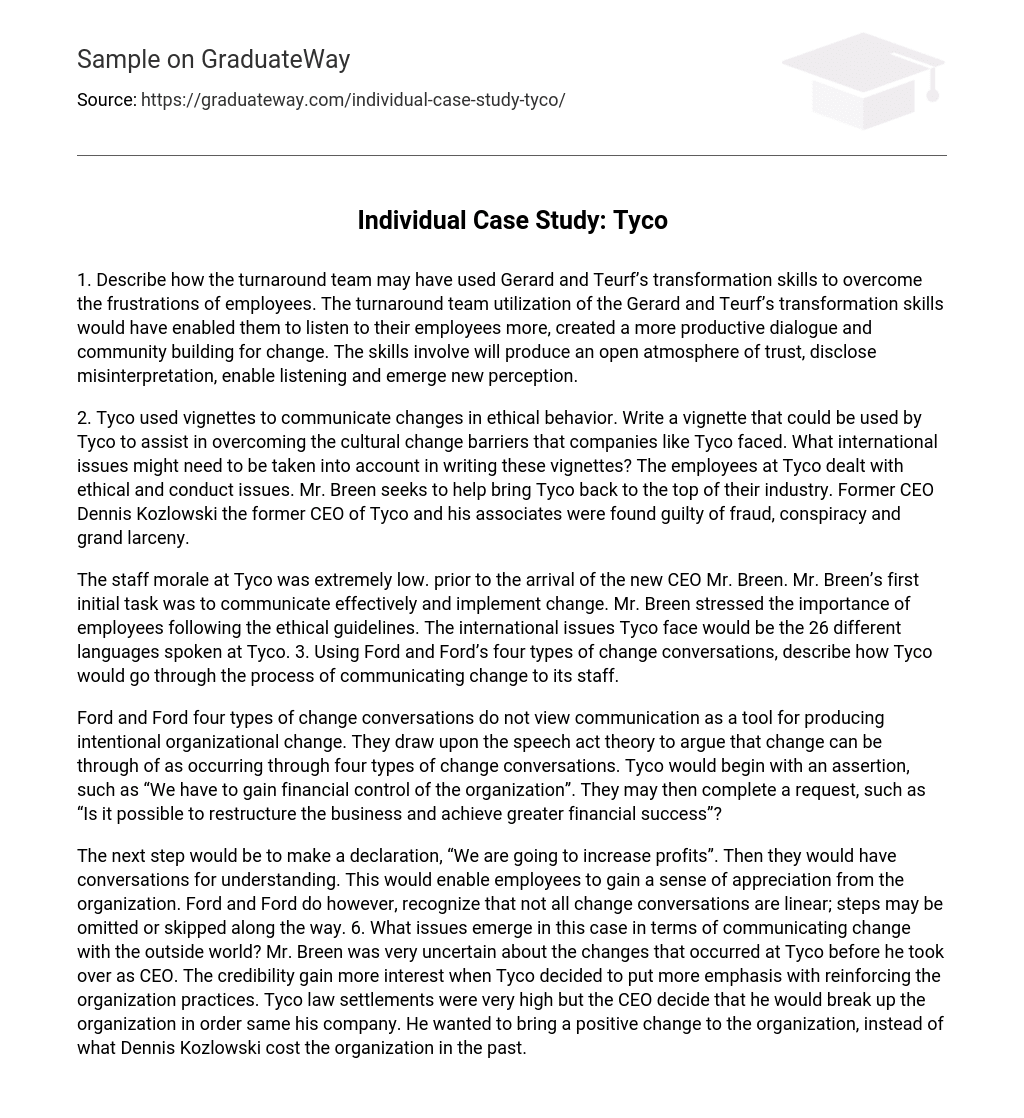The turnaround team could have effectively used Gerard and Teurf’s transformation skills to address employee frustrations. These skills include listening to employees, facilitating productive dialogue, and fostering a sense of community for implementing change. By utilizing these skills, the team would have created an open and trusting atmosphere, encouraging the disclosure of misinterpretations, enabling active listening, and promoting the emergence of new perspectives.
2. Tyco used vignettes as a means to demonstrate shifts in ethical conduct, with the goal of addressing the difficulties encountered by companies similar to theirs in attaining cultural transformation. It is crucial for Tyco to create a vignette that can effectively navigate these challenges while considering global factors. The main emphasis was on resolving the ethical and behavioral issues among Tyco’s staff, as Mr. Breen endeavored to assist Tyco’s revival as a leading contender in their field. Former CEO Dennis Kozlowski and his colleagues were convicted of fraud, conspiracy, and grand larceny.
The staff morale at Tyco was significantly low before Mr. Breen joined the company as CEO. One of his primary responsibilities was to communicate and implement change effectively. He stressed the significance of employees adhering to ethical guidelines. Tyco encountered global obstacles due to the presence of 26 different languages spoken within the organization. To tackle this issue, Tyco utilized Ford and Ford’s four types of change conversations to proficiently communicate changes with its staff.
Ford and Ford propose that communication is not merely a means to achieve intentional organizational change, but rather, change can be facilitated through four distinct types of change conversations. These conversations are characterized by the use of speech acts. For instance, Tyco may initiate a change conversation by making an assertion, such as the need to gain financial control of the organization. Subsequently, they may follow up with a request, such as inquiring about the possibility of restructuring the business to achieve greater financial success.
The next step in the process would involve making a declaration, stating, “We are going to increase profits.” Subsequently, conversations would be held to ensure understanding and allow employees to feel appreciated by the organization. However, Ford and Ford acknowledge that not all change conversations follow a linear path; certain steps may be omitted or skipped. One issue arising in this case concerns the communication of change to the external world. Before assuming the position of CEO, Mr. Breen had doubts about the changes that had taken place at Tyco. The organization’s credibility gained further interest when Tyco decided to place greater emphasis on reinforcing its practices. Although Tyco faced significant legal settlements, the CEO made the decision to restructure the company to save it. His intention was to bring a positive transformation to the organization and undo the negative impact caused by Dennis Kozlowski in the past.





